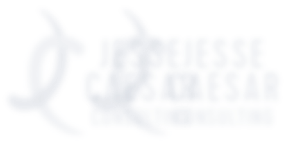Client voyeurism...
In that dark focus facility back room, behind the two-way mirror, clients enjoy the power of seeing without being seen. But with that power comes a certain responsibility: gathering insights! While there are always attendees who would rather spend the whole time texting and Facebooking, most are observing - even enthusiastically so. And yet, these clients still might not be getting as much as they could be from the research.
As a moderator I want my partners behind the glass to be actively listening, anticipating my questions, passing follow-ups in to me on notes if there's anything I need to get to before the end of the session, constructing consumer stories out of their feedback, and identifying patterns as the study moves along. However, it's hard to sit quietly and not become just a passive watcher. (I've always felt I've had it easier than those in the back room.) Clients must contend with the distractions of internet, darkness, and bottomless snacks. It's also easier to miss the forest for the trees: that one loud-mouthed outlier participant; or just a loud shirt.
So, how do you help your clients to pay attention AND watch with a critical eye? You have to moderate the back room as well with setup, engagement, and energy.
Lay out the study's approach and your expectations for your clients to prime them for productive observation. Hopefully your direct client is already invested in the research outcome, but all back room attendees should be made aware/reminded of what the objectives are and what's at stake for the business before interviews begin. (This is also a good way to get everyone on the same page and away from separate agendas.) Walk them through the discussion guide and let them know what you expect to achieve in each of the different sections.
Keep them on their toes with regular check-ins before interviews conclude and quick debriefs in-between. I like to ask them what they're seeing before I start in on my own distillation of the interviews. As long as it serves the research, I'll also take their direction on adjustments to the interviews going forward. This not only keeps them alert, but feeling empowered with a sense of ownership over the results. It's also important to remember that maintaining a high level of energy in the front room is just as important for the respondents as it is for those on the other side of the two-way mirror.
Even with setup, regular engagement, and high energy it's hard to keep the whole back room on task. Sometimes it helps to give them a little homework. Here are a couple of ideas that have worked well for me in the past:
- Everyone must write down an "A-Ha" (a big idea that addresses the research objectives or at least something surprising) on a Post-It and then stick them all up on the wall to review during debriefs.
- Share a note-taking template with grids that correlate with the discussion guide for them to fill out and refer back to in group discussion. Of course, you'll want digital copies to forward, but if you can get them to use a printed version it's a big win - you've gotten them away from their laptop.
Got a back room tactic that helps keep everyone attentive in the right way? I'd love to hear from you!
